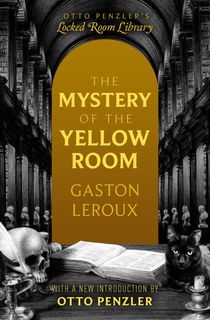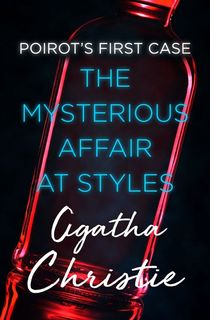All great things in life have to start somewhere, and that's certainly true for mystery books! Extending all the way back to the 19th century, crime fiction has a rich history. If you're a mystery connoisseur who wants to dive into the depths of the past to explore the best classic crime books, this is the list for you! Discover the enigmatic inception of one of the most popular book genres with these canonical works of classic crime fiction.
Related: The Best Mystery Books of All Time

The Moonstone
Though The Notting Hill Mystery (1862-63) has a strong claim to be the first English language crime novel (the genre had been popular in China since the seventeenth century), the sparkling quality of Collins’ 1868 work have made it far more influential. Centering on the disappearance during a country house party of a large Indian diamond, The Moonstone establishes many of the specifics that define crime fiction. The novel features a cast of likely suspects, an amateur sleuth (Frank Blake), a dogged professional cop ( Sergeant Cuff, based on real life Scotland Yard detective, Jack Whicher, protagonist in Kate Summerscale’s true crime classic The Suspicions of Mr Whicher) and a barrel-full of red herrings. Stir in suicide, drugs, embezzlement, a crime reconstruction, and surprise twist in the tail—and you have a blueprint for a large slice of what was to come.

The Mystery of Orcival
In the French countryside a beautiful young countess is found murdered on a riverbank. Her husband is missing presumed slain. The local police follow a trail of clues and arrest a neighbor for the crime. Enter Monsieur Lecoq, a detective with the Paris Surete (The French equivalent of Scotland Yard). The analytical Lecoq immediately suspects the evidence has been planted to point the finger of suspicion away from the real killer. Gradually, through a pleasingly twisty plot, he unmasks the genuine culprit. Lecoq had made his literary debut two years earlier in The Red Affair (1866), but it was in this second novel that Gaboriau’s memorable creation first truly uses a method of logical deduction that borrowed from Edgar Allan Poe’s Auguste Dupin (who lived in Paris) and foreshadowed that of Sherlock Holmes.

A Study in Scarlet
Sherlock Holmes’ debut in this 1887 novel arguably did more to popularize crime fiction than any other event in history. The 27-year-old Conan Doyle wrote The Study in Scarlet in just three weeks (he was paid a flat fee of just £25 for it—about £3,500 today), yet there’s no sign of hurry, or any false steps in the story. Instead, the Consulting Detective strides confidently onto the world stage. In his very first line he offers one of his famously showy pieces of deduction, greeting John Watson with the words, “How are you? You have been in Afghanistan, I perceive.” And, from that moment on, the world was ever eager to return to 221B Baker Street and hear the words “The game’s afoot, Watson!”

The Mystery of the Yellow Room
The author of The Phantom of the Opera may not have invented the notion of the locked room mystery (Poe had, inevitably, got there first) but this 1907 novel did much to popularise a concept that would go on to become a stand-by of crime writing. Leroux not only describes the crime—in which a criminal disappears, Houdini-like, from the locked yellow room of the title—he also provides detailed plans and diagrams, challenging the reader to solve the puzzle faster than his amateur investigator, newspaper reporter Joseph Rouletabille. The intricate plot involves a mad scientist who is working on what sounds like a prototype of the Star Trek teleporter, a secret marriage and a criminal mastermind in disguise. Little wonder the novel was praised as “a classic” by Agatha Christie’s famous investigator Hercule Poirot.

The Mysterious Affair at Styles
What we know today as “cozy crime” starts here with the Queen of Crime’s 1916 debut, the novel that introduces the dazzling Belgian, Poirot to the world. Christie was influenced by Collins and Conan Doyle and—according to her publisher, anyway—wrote her first novel to settle a bet with a relative who wagered she couldn’t come up with an original plot. The Mysterious Affair at Styles has all the elements we’d come to expect from cozy crime—a cast of eccentric middle-class characters with murky pasts, a comfortable country house and a dead body in the drawing room.
Related: 100 Years of Agatha Christie: Celebrating the Larger-Than-Life Mystery Author

Red Harvest
The writer credited with inventing hardboiled crime was Carroll John Daly, the man who made it into an art form was Hammett. An ex-Pinkerton detective, Hammett honed his hard-slugging prose style writing stories for pulp magazines such as Black Mask. His first novel, Red Harvest hit the shelves in 1929. Featuring the Continental Op, an always anonymous gumshoe, and set in Personville, a town so corrosively evil the locals call it “Poisonville”, Red Harvest features mobsters, corrupt police and labour racketeering. This is a world of gunfire and brass knuckles. It’s far removed from the chintz armchairs and blossoming rose beds of Miss Marple and Company. Indeed, if Lord Peter Wimsey turned up in Poisonville they’d likely throw a bag over his head, beat him with a steel pipe and dump him in the river.

The Half-Mast Murder
Kennedy was a British government officer and a crime writer with sufficient reputation in his day to be a founding member—alongside Agatha Christie, Dorothy L. Sayers and GK Chesterton—of The Detection Club. His 1930 novel concerning the stabbing to death of a diplomat in his seaside home and the subsequent investigation by the affable, plodding Detective Superintendent Guest is a decent enough crime novel. What gave the book its special place in the history of the genre, however, came in a review by Donald Gordon in News of Books. The British critic referred to Kennedy’s work as a “whodunit.” It was the first time that word had been used in print.

The Chinese Maze Murders
Nowadays historical crime fiction is a genre all of its own, with popular detectives operating throughout human history from the Ancient World to the Cold War Soviet Union. The man responsible for kick-starting the trend was an eccentric Dutch diplomat, Robert Van Gulik. The Chinese Maze Murders, Van Gulik’s first novel featuring Imperial Chinese magistrate Judge Dee was published in Japan in 1950 and first appeared in English six years later. In his debut appearance, the wise and strict Dee investigates three crimes all connected with an apparently haunted maze, while all the while trying to head off a Mongol invasion. Van Gulik was an expert on all aspects of Imperial China during the Tang Dynasty from the penal code to erotic art, but he wears his knowledge lightly. Like all the Dee novels, The Chinese Maze Murders, rips along at a cracking pace while offering the reader intriguing glimpses into a long lost world.



